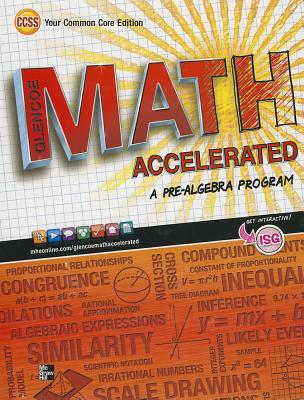
Concept explainers
Find the total cost of four movie tickets and four boxes of popcorn.
Answer to Problem 67CCR
The total cost of 4 movie ticket and 4 box of popcorn is $38.
Explanation of Solution
Given:
Write two equivalent expressions for the total cost of four movie tickets and four boxes of popcorn. Then find the total cost.
Concept Used:
Cost of 1 movie ticket is $7 and the cost of 1 small popcorn ticket $2.50.
Calculation:
Write two equivalent expressions for the total cost of four movie tickets and four boxes of popcorn.
One way:
Total cost = Total cost of 4 movie tickets + Total cost of 4 boxes of popcorn Total cost of 4 movie tickets:
Total cost of 4 boxes of popcorn:
Total cost of 4 movie tickets and 4 boxes of popcorn:
Second way:
Find the cost of 1 movie ticket + 1 box of popcorn
Total cost of 4 movie ticket + 4 box of popcorn = 4 (cost of 1 movie ticket + 1 box of popcorn)
Total cost of 1 movie ticket + 1 box of popcorn =
Total cost of 4 movie ticket + 4 box of popcorn =
Thus, total cost of 4 movie ticket and 4 box of popcorn is $38.
Chapter 7 Solutions
Glencoe Math Accelerated, Student Edition
Additional Math Textbook Solutions
Basic Business Statistics, Student Value Edition
Introductory Statistics
Thinking Mathematically (6th Edition)
A Problem Solving Approach To Mathematics For Elementary School Teachers (13th Edition)
A First Course in Probability (10th Edition)
- The graph of f' is below. Use it to determine where the local minima and maxima for f are. If there are multiple answers, separate with commas. 2 f'(x) N -5 -4 3-2-1 -1 -2 -3 -4 12 3 4 5 -x Local minima at x Local maxima at xarrow_forwardThe graph of f' is below. Use it to determine the intervals where f is increasing. -5-4-32 4- 3 2 1 -2 -3 +x 2 3 4 5arrow_forwardThe graph of f' is below. Use it to determine where the inflection points are and the intervals where f is concave up and concave down. If there are multiple inflection points, separate with a comma. 6 5 4 3 2 1 f'(x) +x -6-5-4-3 -2 -1 1 2 3 4 5 6 -1 -2 -3 -4 -5 -6+ Inflection point(s) at x = Concave up: Concave down:arrow_forward
- The graph of f' is below. Use it to determine where the local minima and maxima for f are. If there are multiple answers, separate with commas. f'(x) 4- -5-4-3-8-1 3 2 1 x 1 2 3 4 5 -1 -2 -3 -4 Local minima at a Local maxima at =arrow_forwardThe graph of f' is below. Use it to determine the intervals where f is increasing. f'(xx) 4- -5 -3 -2 3 2 1 1 2 3 4 5 Cit +x 7 2arrow_forwardPlease focus on problem ii.arrow_forward
 Calculus: Early TranscendentalsCalculusISBN:9781285741550Author:James StewartPublisher:Cengage Learning
Calculus: Early TranscendentalsCalculusISBN:9781285741550Author:James StewartPublisher:Cengage Learning Thomas' Calculus (14th Edition)CalculusISBN:9780134438986Author:Joel R. Hass, Christopher E. Heil, Maurice D. WeirPublisher:PEARSON
Thomas' Calculus (14th Edition)CalculusISBN:9780134438986Author:Joel R. Hass, Christopher E. Heil, Maurice D. WeirPublisher:PEARSON Calculus: Early Transcendentals (3rd Edition)CalculusISBN:9780134763644Author:William L. Briggs, Lyle Cochran, Bernard Gillett, Eric SchulzPublisher:PEARSON
Calculus: Early Transcendentals (3rd Edition)CalculusISBN:9780134763644Author:William L. Briggs, Lyle Cochran, Bernard Gillett, Eric SchulzPublisher:PEARSON Calculus: Early TranscendentalsCalculusISBN:9781319050740Author:Jon Rogawski, Colin Adams, Robert FranzosaPublisher:W. H. Freeman
Calculus: Early TranscendentalsCalculusISBN:9781319050740Author:Jon Rogawski, Colin Adams, Robert FranzosaPublisher:W. H. Freeman
 Calculus: Early Transcendental FunctionsCalculusISBN:9781337552516Author:Ron Larson, Bruce H. EdwardsPublisher:Cengage Learning
Calculus: Early Transcendental FunctionsCalculusISBN:9781337552516Author:Ron Larson, Bruce H. EdwardsPublisher:Cengage Learning





